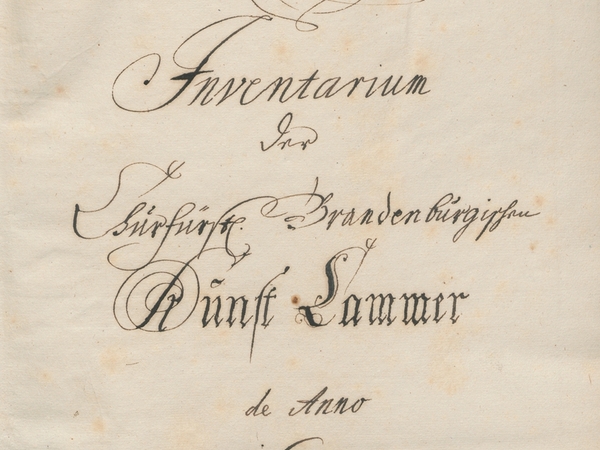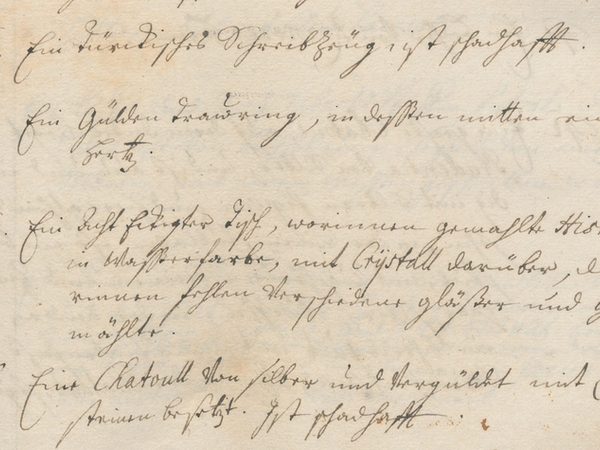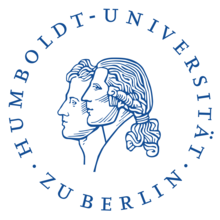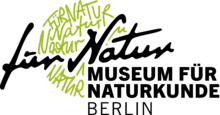Here researchers will find a tabular overview of key sources for the Brandenburg-Prussian Kunstkammer (and its predecessor and successor institutions), some of which (see list below) are digitized and/or supplemented with transcriptions (working drafts) and detailed object information. The source IDs were assigned in conjunction with the book publication associated with this project.
The sources for the Berlin Kunstkammer consist of inventories, travel reports, collection guidebooks, photographs, and databases, which are housed in, or available through, various archives and libraries in Berlin as well as other institutions in Germany. The Kunstkammer objects studied in the research environment were investigated using the sources examined in the project. Numerous objects are still preserved in the collections of the Staatliche Museen zu Berlin or have been integrated into the holdings of the Museum für Naturkunde Berlin; others are now in the collection of the Humboldt-Universität zu Berlin. However, since many of the objects now survive only in historical sources, the research environment focuses on a text-based reconstruction of the holdings to enable users to at least study them virtually and by time period. Each source thus provides an individual view of the collection and its objects while at the same time constituting an archaeological layer of sorts.
[for information on using the search function, see "Research Environment"]
In the source- and text-based reconstruction of the holdings, the objects have been identified and linked throughout the various sources. The systematic analysis of a defined and extensively documented period makes it possible to precisely trace the dynamics of the collection (especially the holdings of naturalia) from 1668 to 1793 with regard to location, accession, deaccession, and use. The greater the number of sources for an object, the more it was possible to interpret contradictory or incomplete information. Such an approach is a desideratum for the remaining collection holdings as well as for the more detailed analysis of the nineteenth-century archival records, work that came to a temporary end with the Kunstkammer guide of 1805 in this phase of the project.
The sources were transcribed in part by the project team and by participants in the Transcription Workshop of the Museum für Naturkunde, a citizen science symposium in which handwritten documents are transcribed in conjunction with science history projects of the museum.
Archival Sources Analyzed in Detail and their Current Status
Supporting Libraries and Archives




























